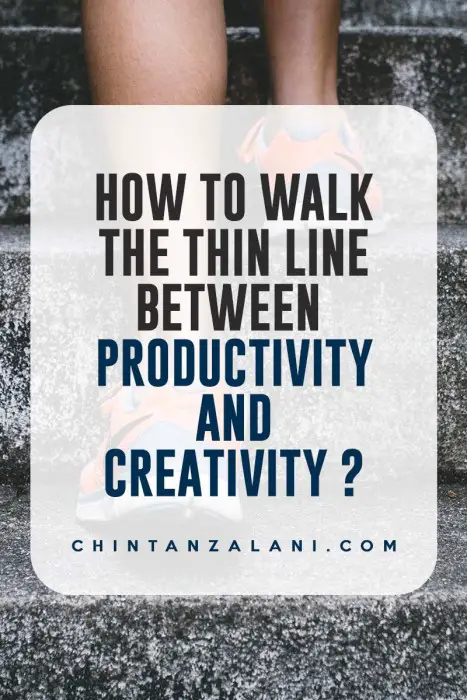
How to balance creativity and productivity?
Congratulations! You’re successfully nailing all your deadlines. Those shiny to-do lists are working well to prioritize your day. So you’re squeezing your highest monetary value.
But…
Aren’t you forgetting the cute little unicorn inside you that brings forth revolution? The ninja that doesn’t care about the rules and is responsible for leaving your footprint in the world…
Creativity.
Sure you’re adding value with all the work you complete off your plate and increase your market price.
I am curious about:
The last time you got deeply involved in a project and extracted your creative energies right down to the last drop?
The focus is getting more work done at your highest possible standard in the shortest amount of time. “Getting shit done” is a catchphrase used by startups in their job postings.
This obsessed productivity philosophy hampers you from giving the highest quality of contributions. Let’s see how questions around creativity and resting get tossed by a typical productivity ninja.
Maybe this is your-manager-who-has-learnt-the-coolest-work-culture-thingies-from-his-recent-silicon-valley-trip. Sshh…
![]()
Q. I feel drowsy and lethargic throughout the day. Can an extra hour of sleep help in improving my performance?
A. Dude, try espresso shots.
Q. Whoosh..completed the project before the deadline.
A. So freaking awesome..now please start the next 13 priority shits you received emails about (from departments even I haven’t heard about before).
Q. I’ve a new idea for implementing the project. Interested to chime in?
A. Did you say automation? We’re all about reducing inefficiencies.
Q. Nope, I am talking about another angle for executing this project. I’ll need more time…
A. We’ve a looming deadline in 15 days…Get your shit together.
Alrighty, enough about the disruptive nature of creativity. Only when you converge your thinking from those big ideas can you create. Which is why, you need to thread along your creative sparks in the most productive manner.
So the solution is to walk the thin line between the two.
Why do you need to balance creativity and productivity?
Creativity is not measurable. First, you need to synthesize information from various source. Then let your brain sit back and make connections between your bank of knowledge.
While working on a project, you hope to cross-pollinate ideas from various fields leading to that sensational moment….
A breathtaking idea that has the potential to make a 10x impact.
But for these good things to happen:
You’ll need to goof around, let your imagination run wild and not judge any of the ideas that surface. You might end up getting your most creative ideas while you’re in the shower.
But, productivity is quantifiable with hard numbers that show progress.
It’s simple…either finish your tasks or get reprimanded. And going for a bath will only count as a time waste under productivity’s umbrella. You first need to clean your work mess.
Now, you might get tempted to pursue every day productivity. Thereby, only improve your core career skills. Because people judge your value by that.
But have you considered that creativity can improve your per hour value drastically?
Creativity alone might not be able to help you make a living. You’re more likely to procrastinate and spend time watching cat pictures on Facebook when you don’t have a deadline.
I know it sounds hip, but don’t nurture the romantic idea of a starving artist. It’s stupid to refuse to work for dollars because it doesn’t appeal to your creative ego. Sometimes you’ve to suck it up and do shitty work.
Why?
Because money gives you the peace of mind and freedom to pursue your novel ideas in a more free-spirited fashion.
So balance both of them. You’ll find that numbers help you judge and pursue your most creative idea. And ultimately give your career an optimal growth trajectory.
Now let me show you how you can strike a balance between these two important things.
Chase only the most impactful tasks
Here are the results of employed people aged 25 to 54 from the American Time Use Survey.
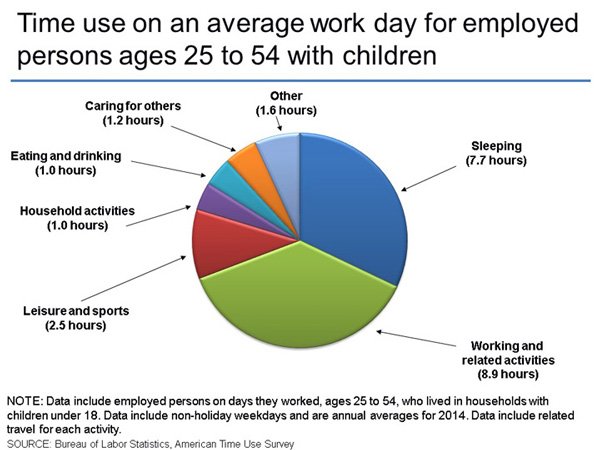
As you can see, a typical American workday is 8.9 hours.
And this day is crammed with meaningless meetings, let’s-just-procrastinate-Facebook-and-coffee-breaks, administrative tasks and attending emails. An AtTask Survey of large US companies (1000 plus employees) found that only 45% of the time is spent on primary job duties.
If you’re a business owner or an independent worker, you can experiment with 6-hour workdays. A shorter workday will keep your energy levels up and force you to pursue only the essential tasks. It will leave enough time for exercise, resting and relationships. Even acquiring skills unrelated to your career field (thereby leading to productivity).
Sweden has switched to a standard 6-hour workday. Stockholm-based gaming company Filimundus switched to the reduced workday last year. And as per their CEO Linus Feldt, the results have been positive.
“My impression now is that it is easier to focus more intensely on the work that needs to be done, and you have the stamina to do it and still have energy left when leaving the office.”
Increasingly, four-day workweeks are getting adopted by companies across the US.
For instance, Treehouse received fame for raising $4.75 million dollars and becoming profitable all while working 4-day work weeks. They believe that “smart folks can get five days of work done in four days.”
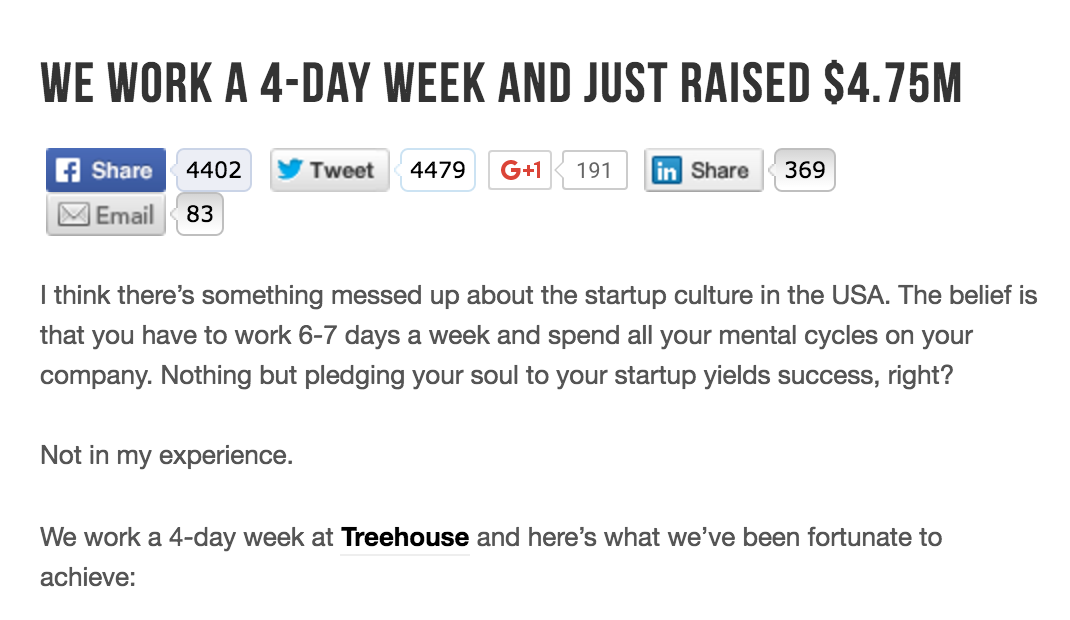
It isn’t possible for every company and worker to adopt such squeezed workweek in all office circumstances. You’ll have to grind when you’re launching a new product. Or when you’re in the early phase of your startup. So here are three tips to choose high-value tasks in such cases.
1. BefriendMr. Pareto
Italian economist Vilfredo Pareto made a powerful observation:
20% of the Italian population owned 80% of the land.
Management Consultant Joseph M. Juran later found that this principle was true for many other events. Including business, science, and health.
Microsoft also reported that: “By fixing the top 20% of the most reported bugs, 80% of the related errors and crashes in a given system would be eliminated.”
So plan your workday with defining the 20% of the tasks that will have 80% of the impact on your performance.
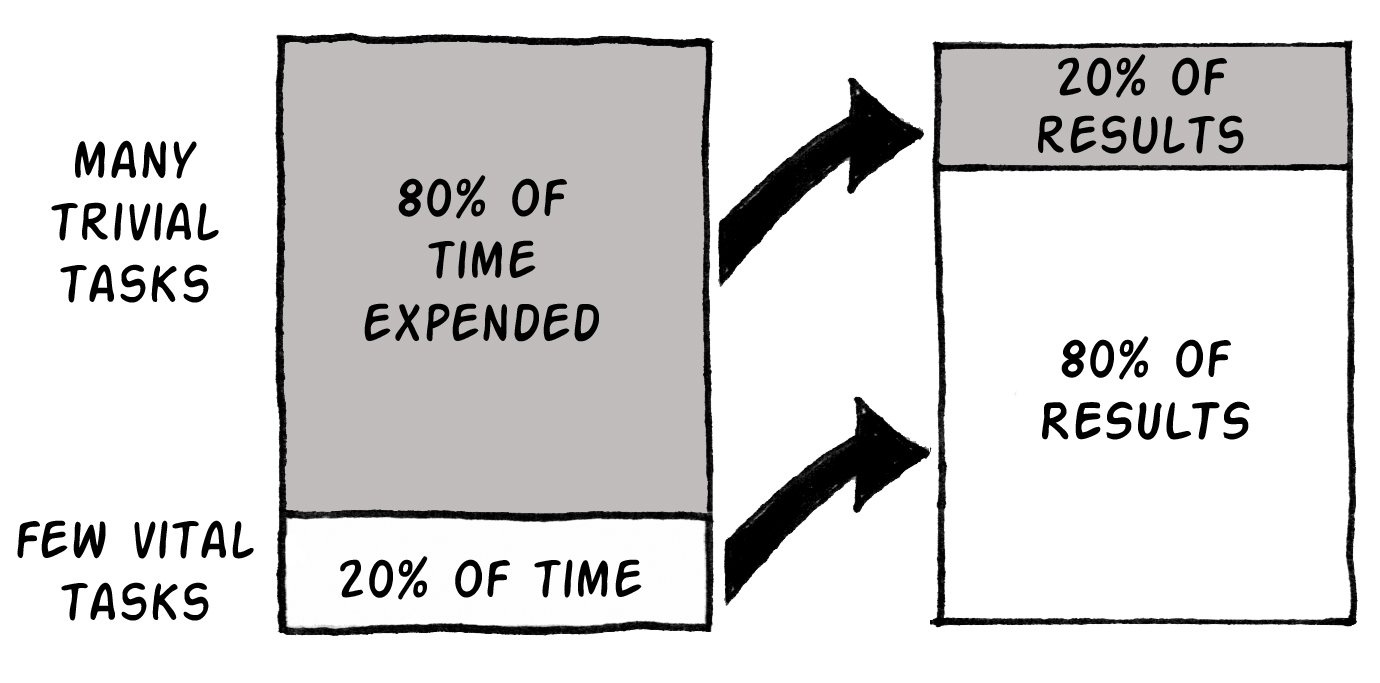
2. Say no to shiny new projects
What you choose not to do is as important (or rather more important) as what you choose to do. It’s a nice feeling to be the go-to person in your team for crisis management.
But it brings along the danger of having little time to pursue work that you like, stretches yourself thin and can even lead to a burnout.
So don’t be afraid of offending your manager. He’ll respect your decision to value your time.
Remember not to act cute and soften your request with a light tone or a grimace. Be confident, not overly polite.
3. Create space for yourself by setting aside “thinking time” everyweek
Have you ever felt overwhelmed with continuous meetings and everyday tasks at your workplace?
Then you’re in company with the likes of Jeff Weiner. His jam-packed schedule left little time to process what was discussed in meetings.
His solution to the problem?
Schedule 90 minutes to 2 hours of buffers everyday.
Even Bill Gates is known to take a couple of weeks off to reflect deeply without interruption.
Jeff points out that such thinking breaks might make you feel like an indulgence at first.
But:
It’s important to gain control over your day, connect the dots and synthesize your ideas.
Judging your creative curiosities equals restraining your thinking
Want to know a secret of coming up with an impactful idea?
Let 99 bad ones surface first.
Don’t fear failure or getting ridiculed by your fellow workers for presenting your ideas. Mark Zuckerberg followed the philosophy of breaking things and moving fast at Facebook.
Even if you’re not in such a powerful position, you must be okay with shipping imperfect work. Most of our life is a work in progress.
From a productivity standpoint, you might get afraid of discussing weird ideas. But unless you find a gem, you aren’t executing a bad idea.
What if you aren’t the kind of person that gets ideas?
It’s a muscle that you need to build…just like you need to sweat in the gym for building your physical body.
James Altucher, the idea machine, recommends you to keep a notepad and come up with ten ideas every day.
He warns that perfectionism is the enemy of the idea muscle.
Let the bad ideas surface and don’t feel guilty over them. If you don’t want to keep a notepad of ideas, then you can even record your ideas in a mobile app.
Once you’ve a bank of ideas, you can combine them and keep having fun. For James, it took six months to change his life and become an idea machine.
Remember that creative inspiration can strike anytime. Indeed, subconscious mind whoops its magic wand when you engage your conscious mind on not concentrating on the task at hand.
So don’t get shocked to get the AHA moment while shaving or when you’re only half awake!
Take ample amount of rest to limit chronic stress
As per scientists at University College London, longer working hours are linked with higher chances of stroke. The coronary review pulled out its data from various studies containing 603,838 individuals from USA, Europe and Australia. And it followed them for an average of 8.5 years.
People that worked over 55-hour work weeks had:
33% higher risk of stroke and 13% increased risk of coronary heart disease than those who work 35 to 40 hours per week.
Now, this study has significant implications on how you should approach work. With higher stress and depleting health, your ability to think creatively also diminishes.
But it shouldn’t influence you to choose a low-stress project.
If you want to grow your skill set, you’ll need to move out of your comfort zone. And it will involve short-term stress. You need a positive attitude towards handling such events.
Health psychologist Kelly McGonigal in this TED talk mentions that “stress may only be bad for you if you believe that to be the case.”
But beware – there should be no intense and on-going stress at your job. If you’re consistently required to fulfill requirements much higher than your ability, then you’re entering a dangerous territory. Such chronic stress is linked with heart disease, anxiety, depression, and weakened immune system.
Moderate stress with acute nature can help in achieving your optimal performance level. While also leading to higher work satisfaction.
Let me also warn you not to resort to excessive caffeine for managing stress and pushing through deprived sleep. Besides toying with your circadian rhythm, it also cramps your creativity.
A better solution is taking 20-30 minute power naps. Create a regular napping schedule. It can boost your focus and improve connections in your brain for previously unassociated information. And lead to a surge in your creative problem-solving skills.
As per the sleep foundation, you should get an average of 7-9 hours of sleep every day. So unless you’ve got a product launch or you are chasing a project deadline, you should get this recommended dose of sleep.
Your workday should also leave you ample time to exercise. It flushes out toxins from your body, lowers stress and boosts your creativity (convergent and divergent thinking).
You don’t need to start with the fanciest gym in your locality. Slowly build a habit of cardio workout. Here are 10 minute home workout tutorials to guide you on YouTube. You can also download the 7-minute workout app for tracking your workout sessions.
Develop non-core career skills
The concept of lifelong learning sounds good in theory. Here’s how the process occurs actually.
Google became famous for allowing its engineers to pursue side-projects for one full workday. The caveat in leveraging 20% of work-time was that these projects needed to contribute to Google’s progress. Gmail, Google News and Google Talk are all results of such side hustles.
You might not have the same liberty with your company. Even Google’s 20% of independent project time came under the scanner.
So you’ll need to independently pursue skills unrelated to your job. Because diversifying your skill set will improve your creative thinking ability. Here are seven skills that transfer to other areas of your professional life.
- Learning how to learn at Coursera
- Persuasion
- Writing and Speaking
- Programming
- Leadership
- Problem-solving and critical thinking
- Learning a new language at Duolingo
You can use a motivation app like the Beeminder for staying on track. Unless you’ve got extravagant free time, don’t shoot for ambitious goals. Half an hour a day is good for a start. Regular learning will lead to more absorption and retention than irregular intense learning sessions.
Embrace the unsexy pillars of creativity: Discipline and Routine
I’ve already told you about building an idea muscle. See it’s great to take an occasional jump to a new creative idea for a project and capitalize on the excitement. Ultimately, though, the most important aspect of creating is a tireless routine of execution.
If you don’t have any concretely executed idea, then you’re only meandering in the world of possibilities. Rather aim to shape your ideas into a tangible reality.
For making an impact, you need to commit to your most promising idea. And build the habit of finishing projects that you start.
Find it difficult to stay focused for extended periods of time? Then try the Pomodoro technique.
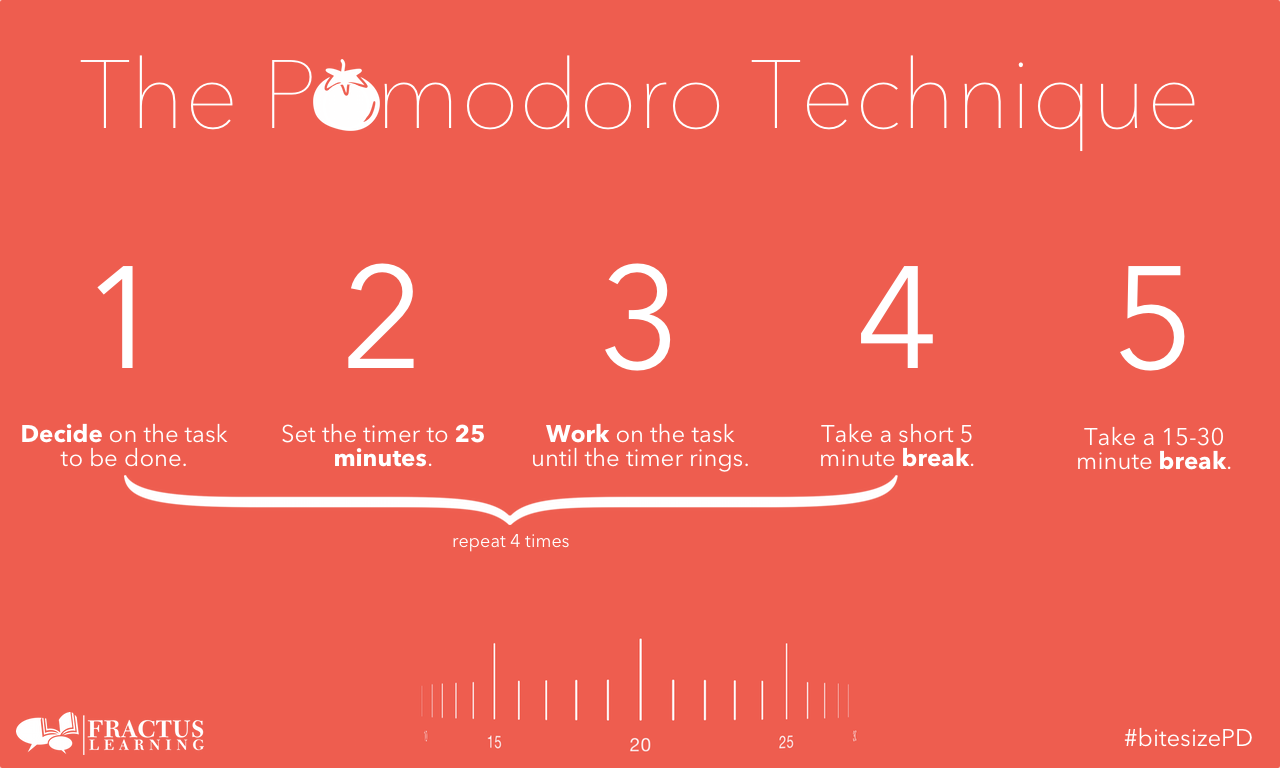
Short bursts of 25 minutes are a great tool to generate your highest levels of concentration. It has helped many people to overcome procrastination and get more work done.
You can also experiment with batching tedious tasks…The ones that are a regular occurrence in your creative work.
Historically, creative people have been known to get into their creative zone with a cue like eating breakfast.
You can create a similar routine around your personal productive time – whether it’s early in the morning or late at night.
For finding your most productive time in the day, I’ve got a tool for you:
Allow it to track your day for a week or so. My most productive period is generally between 4 pm to 9 pm. And I get into the zone with a cup of tea in the evening.

If you show up at the same time every day, you’ll not only get your work done faster. You’ll also think more creatively. Hopefully leading to your most innovative and inspiring work.
Take ownership and work your heart out
Clocking 9 to 5 to complete menial tasks ordered by a superior isn’t exciting. In the 1970s, corporate honchos in America saw a decline in employee productivity. So they distributed their stocks to the employees to make them feel happier and more engaged.
This is legal ownership and has been found to have positive effects on productivity.
But for getting intrinsically motivated, you need to proactively pitch ideas (within or outside) your project that helps your company’s goals. It will up your productivity and get you creatively invested.
That’s why much more important than the actual ownership, is the feeling of ownership towards your company and your job…
Meet psychological ownership.
Have you ever executed your personal ideas at work?
You feel more excited and involved. The autonomy in making decisions makes you feel that you’re in control. You’ll not need external cues to put down the phone during a team discussion or need regular Facebook breaks.
You’ll personally create a distraction-free space for pursuing your work. And once you enter your flow, you’ll contribute your most creative work.
Congratulations your job has become a part of your identity!
Now while we’re on the inspirational subject of getting emotionally invested, let’s also talk about the bias that creeps in.
Humans are crazy creatures. First, we need a sense of ownership to enjoy our work. But as our job becomes a part of our identity and our ownership is challenged, we start taking feedback personally. We also resist changing our opinions. Don’t be the guy in the cartoon below.

If you enter into a conflict with your fellow worker on a project, then you need to cross-check their arguments objectively. You can’t know every aspect about your project. Hence, you need to respect ideas tossed by other team members.
Conclusion
Every thought you have is creative. But exploration that leads to ridiculous ideas isn’t welcomed at workplaces and schools. It shouldn’t stop you though from building your idea muscle. And amplifying your knowledge base.
It’s equally important though to create systems and build routines to improve your productivity. But occasional disruption of your schedule is justified. Particularly, when you’re experiencing a creativity influx or have a project deadline to meet.
Mostly aim to strike a balance between your creative and productive counterparts. They are both on the same team willing to improve your overall performance.
How do you balance creativity and productivity at work? I would love to hear your opinions in the comments box below.
All those cute little gif images were brought to you by Giphy.
If you want to receive updates about my silly new posts in your inbox, then enter your name and email address below. And press the ‘Subscribe’ button!

How to balance creativity and productivity?
